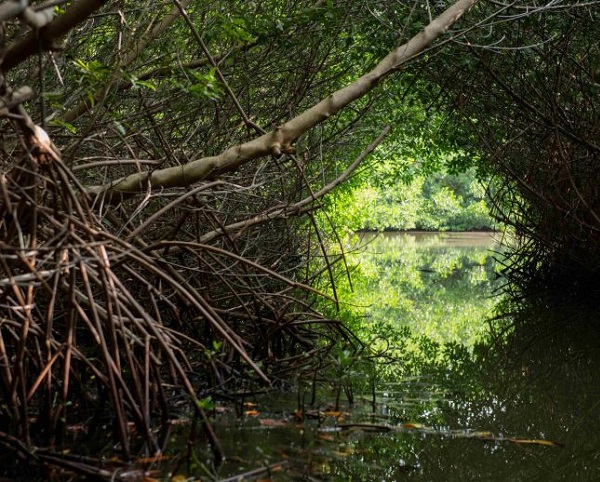
Soualiga Newsday writes that “on World Mangrove Day (June 26), the Dutch Caribbean Nature Alliance (DCNA) is sounding the alarm: mangroves, nature’s coastal protectors, are under serious threat across the region.”
Found only on Aruba, Bonaire, Curaçao and St. Maarten, these salt-tolerant forests are among the most powerful ecosystems in the Dutch Caribbean. They absorb up to 10 times more carbon than tropical rainforests, buffer coastlines from erosion and storms, and provide nursery grounds for countless marine species.
Yet across the islands, mangroves are declining fast. But there’s a path forward, if we act now.
Alarming Findings
The recently published State of Nature Report Caribbean Netherlands, by Wageningen Marine Research and subsidized by the Ministry of Agriculture, Fisheries, Food Security and Nature (LVVN), reveals a disturbing trend for mangroves.
The report identifies coastal development and erosion, made worse by poor water management and sedimentation, as the biggest threats to mangroves today. The report finds that, on Bonaire, many mangroves areas show declining ecological conditions, especially in places like Lac Bay and Lagun where hydrological disruption is severe.
Sediment buildup is suffocating root systems, and degraded upstream catchments are funneling more runoff into mangrove zones than ever before. Although this report focused on the mangroves of Bonaire, these threats and environmental patterns are seen on the other three islands (Aruba, Curaçao, and St. Maarten) as well.
Mangroves are a cornerstone of both climate resilience and biodiversity, providing essential services that benefit people, wildlife, and the economy. From buffering coastlines against storms to supporting fisheries and storing vast amounts of carbon, their role in ecosystem health cannot be overstated.
The State of Nature Report makes it clear: without immediate and sustained action, we risk losing these critical habitats, and with them, the natural defenses our islands depend on
Where Do We Go from Here?
The Ministry of LVVN plays a crucial role in nature conservation in Bonaire, Saba, and St. Eustatius, as outlined in the Nature and Environmental Policy Plan Caribbean Netherlands (NEPP) 2020–2030.
Recent statements, such as DCNA’s call to action stressed the need for immediate action while a joint statement published by WWF and island partners (including DCNA, local protected area management organizations and nature NGOs) estimated €300 million in additional funding is needed to meet the NEPP’s 2030 milestones.
Roughly half of this is required for direct conservation and restoration of nature (such as mangroves, coral reefs, forests), while the other half is needed to upgrade critical environmental infrastructure, such as wastewater treatment systems.
It’s a big number, but big problems demand bold investments if we want to see real, lasting change for nature. Delaying action will only make future solutions more expensive and less effective, while ecosystems continue to degrade.
At the same time, the other Dutch Caribbean islands, Aruba, Curaçao and St. Maarten, also face growing threats to their ecosystems and are in need for more support. There is an urgent need for a coordinated regional approach and more equitable funding across all six islands.
DCNA is committed to helping lead this change for all six Dutch Caribbean islands. With support from the Dutch Postcode Lottery and co-funding from WWF-NL and Bloomberg Philanthropies, DCNA is kick-starting the Conservation and Restoration of Key Habitats Program.
To help reverse the alarming decline of mangroves and other key habitats, this regional Program will place strong emphasis on key habitats such as mangroves, scaling up on-the-ground restoration, strengthening environmental policy and enforcement, and embedding habitat protection into spatial planning and climate strategies at both national and island levels.
If we lose mangroves, we lose one of nature’s most effective shields against climate change and biodiversity loss. But with joint action, these ecosystems can recover and continue protecting life above and below the waterline.
For original article, see https://www.soualiganewsday.com/index.php?option=com51
[Shown above, photo by Hans Smulders: Red mangrove.]
